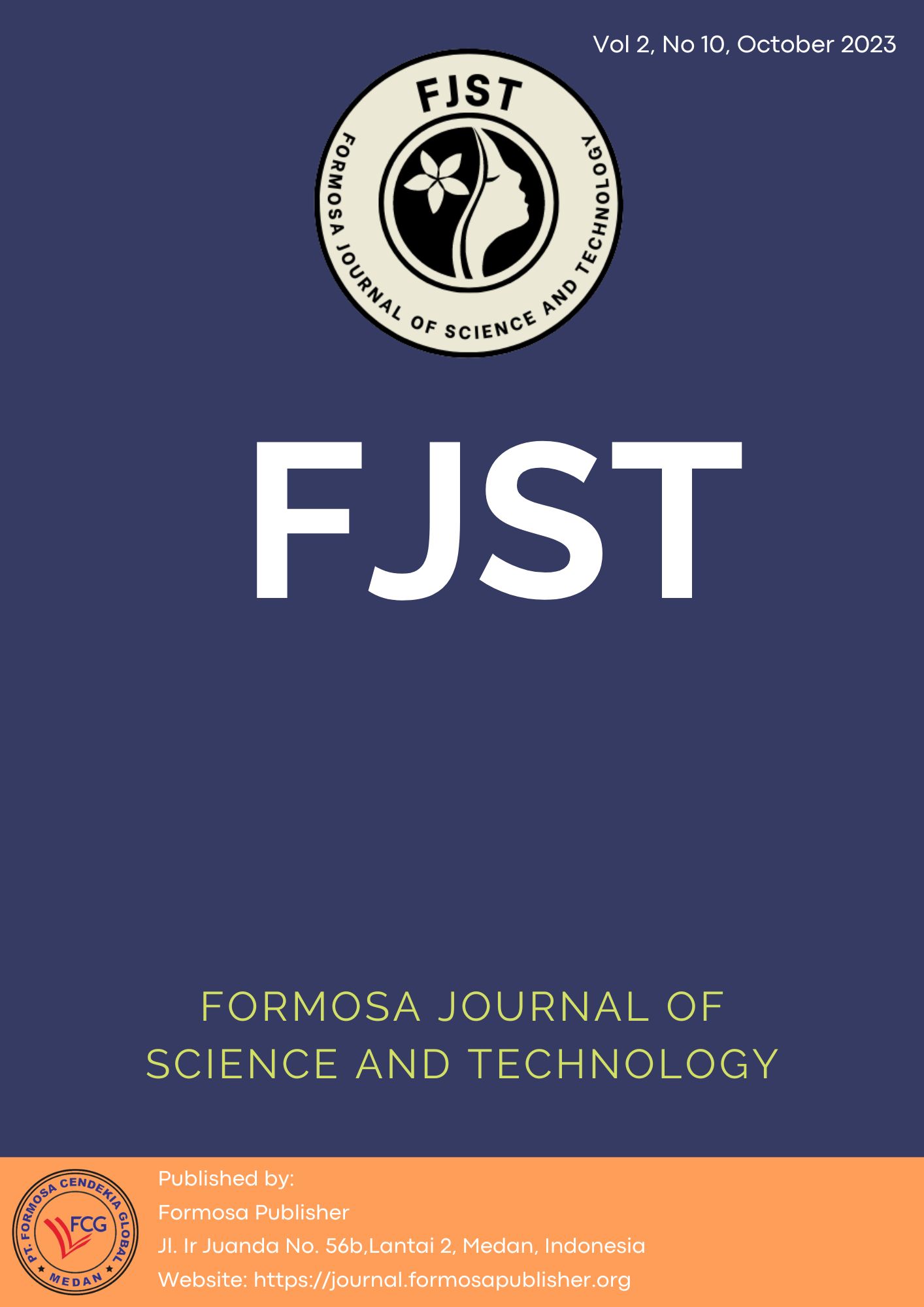Learning Enzyme Concept through BioMan Enzymatic: An HTML Simulation Game
DOI:
https://doi.org/10.55927/fjst.v2i10.6471Keywords:
Simulation Game, Enzymatic Game, Interactive Simulation, Bioman EnzymaticAbstract
This research examined the impact of the HTML-based simulation game "BIOMAN: Enzymatic" on first-year students' grasp and retention of enzyme-related biology concepts. In the academic year 2022-2023, 70 students participated in the study. The game effectively improved student performance across three classes, evidenced by significant increases in mean scores from pre-tests to post-tests. Statistical analyses, including paired t-tests and ANOVA, confirmed the significance of these improvements, ruling out chance as the cause. These findings emphasize the value of simulation games in science education, boosting engagement, motivation, and understanding. The study encourages educators to integrate such technology into teaching, advocating for personalized learning, active methods, and ongoing innovation.
Downloads
References
Adams, D. M., Mayer, R. E., MacNamara, A., Koenig, A., & Wainess, R. (2012). Narrative games for learning: Testing the discovery and narrative hypotheses. Journal of Educational Psychology, 104(1), 235.
Baughman, B. (2021). Biology Games & Virtual Labs!. BioMan Biology: Enzymatic.https://biomanbio.com/HTML5GamesandLabs/LifeChemgames/enzymatichtml5page.html
Blumberg, F. C., & Fisch, S. M. (2013). Introduction: Digital games as a context for cognitive development, learning, and developmental research. New directions for child and adolescent development, 2013(139), 1-9.
Boeker, M., Andel, P., Vach, W., & Frankenschmidt, A. (2013). Game-based e-learning is more effective than a conventional instructional method: a randomized controlled trial with third-year medical students. PLoS One, 8(12), e82328.
Boyle, E. A., Hainey, T., Connolly, T. M., Gray, G., Earp, J., Ott, M., ... & Pereira, J. (2016). An update to the systematic literature review of empirical evidence of the impacts and outcomes of computer games and serious games. Computers & Education, 94, 178-192.
Campbell, S., Greenwood, M., Prior, S., Shearer, T., Walkem, K., Young, S., ... & Walker, K. (2020). Purposive sampling: complex or simple? Research case examples. Journal of research in Nursing, 25(8), 652-661.
Clark, D. B., Nelson, B. C., Chang, H. Y., D'Angelo, C. M., Slack, K., & Martinez-Garza, M. (2011). Exploring Newtonian mechanics in a conceptually-integrated digital game: Comparison of learning and affective outcomes for students in Taiwan and the United States. Computers & Education, 57(3), 2178-2195.
Clark, D. B., Tanner-Smith, E. E., & Killingsworth, S. S. (2016). Digital games, design, and learning: A systematic review and meta-analysis. Review of Educational Research, 86(1), 79-122.
D’Angelo, C., Rutstein, D., Harris, C., Bernard, R., Borokhovski, E., & Haertel, G. (2014). Simulations for STEM learning: Systematic review and meta-analysis. Menlo Park, CA: SRI International.
de Jong, T., Linn, M. C., & Zacharia, Z. C. (2013). Physical and virtual laboratories in science and engineering education. Science, 340(6130), 305-308.
El Kharki, K., Berrada, K., & Burgos, D. (2021). Design and implementation of a virtual laboratory for physics subjects in Moroccan universities. Sustainability, 13(7), 3711.
Potkonjak, V., Gardner, M., Callaghan, V., Mattila, P., Guetl, C., Petrović, V. M., & Jovanović, K. (2016). Virtual laboratories for education in science, technology, and engineering: A review. Computers & Education, 95, 309-327.
Honey, M. A., & Hilton, M. (2011). Learning science through computer games and simulations. National Academies Press.
Ibáñez, M. B., & Delgado-Kloos, C. (2018). Augmented reality for STEM learning: A systematic review. Computers & Education, 123, 109-123.
Lamb, R., Annetta, L., Meldrum, J., & Vallett, D. (2012). Measuring science interest: Rasch validation of the science interest survey. International Journal of Science and Mathematics Education, 10(3), 643-668.
Merchant, Z., Goetz, E. T., Cifuentes, L., Keeney-Kennicutt, W., & Davis, T. J. (2014). Effectiveness of virtual reality-based instruction on students' learning outcomes in K-12 and higher education: A meta-analysis. Computers & Education, 70, 29-40.
National Research Council. (2012). A framework for K-12 science education: Practices, crosscutting concepts, and core ideas. The National Academies Press.
Obispo, K. P. C., Yap, K. D., & Yap, J. M. (2020) The Use of Interactive Simulation in Teaching Science 9: Projectile Motion.
Panadero, E., Klug, J., & Järvelä, S. (2016). Third wave of measurement in the self-regulated learning field: When measurement and intervention come hand in hand. Scandinavian Journal of Educational Research, 61(6), 750-753.
Rutten, N., van Joolingen, W. R., & van der Veen, J. T. (2012). The learning effects of computer simulations in science education. Computers & Education, 58(1), 136-153.
Squire, K. (2011). Video games and learning: Teaching and participatory culture in the digital age. Teachers College Press.
Squire, K., & Jan, M. (2007). Mad City Mystery: Developing scientific argumentation skills with a place-based augmented reality game on handheld computers. Journal of Science Education and Technology, 16(1), 5-29.
Vogel, J. J., Vogel, D. S., Cannon-Bowers, J., Bowers, C. A., Muse, K., & Wright, M. (2006). Computer gaming and interactive simulations for learning: A meta-analysis. Journal of Educational Computing Research, 34(3), 229-243.
Wouters, P., van Nimwegen, C., van Oostendorp, H., & van der Spek, E. D. (2013). A meta-analysis of the cognitive and motivational effects of serious games. Journal of Educational Psychology, 105(2), 249-265.
Downloads
Published
How to Cite
Issue
Section
License
Copyright (c) 2023 Kristoffer Paul Obispo

This work is licensed under a Creative Commons Attribution 4.0 International License.











.png)


















